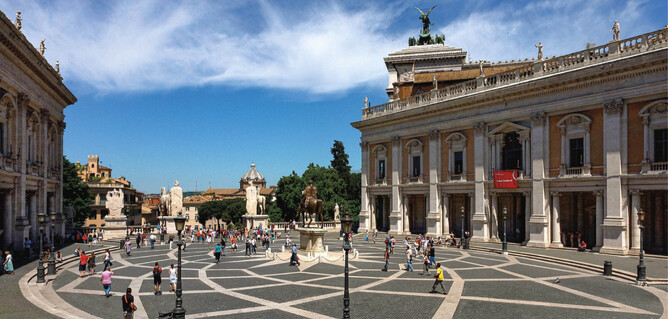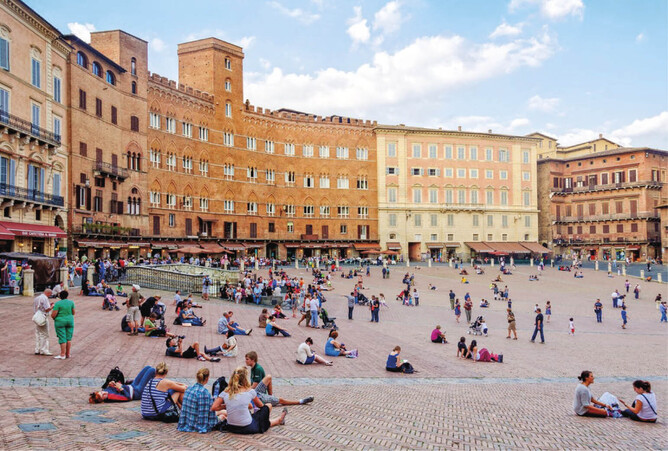When I walk through Garden Place, an irksome feeling resurrects in me that somehow Garden Place seems incomplete, unresolved, and even unsure of itself, awaiting another political kickstart of courage to edge closer to an – as yet – undefined completion.
Some of the irk is that there are way too few exciting shops or eateries at its perimeter to draw me in, nor a pavement-wide set of diners at tables. Some irk is that there is no sense of anticipation or delight on arriving at Garden Place as one might hope on coming to a town’s heart. In many towns and cities around the world the city square would be the key meeting place to catch up with friends or colleagues, to shop or to eat, or for simply the buzz of being at an urban heart.
Garden Place, once a hill, has a Māori and colonial story well-documented by Waikato Museum online, and with the more recent history vividly played in Michael Switzer’s “One Hill of a Fight”. Garden Place has had periods of good success as an unpretentious lawn and fountain pool piazza, bound by minor roadways and street-front shopping. A number of interventions since, however, has fragmented the simplicity the piazza once had.
In 2008 Hamilton City Council actively set about to rectify the muddle Garden Place had become, and – with substantial and worthwhile input from a good handful of urban design, retail and engineering experts – council prepared the “Hamilton City Heart Revitalisation Project”. The ‘project’ was a comprehensive plan for a set of significant changes to enhance the public space.
The pleasing and perhaps surprising thing is that council actually effected a good number of those, and Garden Place is much better for those changes already. These changes included; moving the underground carpark entrance away from Alexandra Street to Anglesea Street, removing the road-blocking concrete speakers’ podium, reconnecting Alexandra Street to Worley Place with a shared pedestrian zone, and installing the popular waterspout court. Garden Place is now occupied with an array of features, themes and environments.
The council seems, however, to have shied away from completing the original mission. Other than replacement street furniture and new plantings, there appears nothing in Hamilton City’s recent “Central City Transformation Plan 2021-2051” to further the work at Garden Place, and while the Long Term Plan has identified $200,000 for CBD Design Guidelines, this is unfunded. The enhancement of Garden Place planned in 2008 has halted, incomplete. Nonetheless, this may not be a bad thing.
Looking at great piazzas and town squares around the world, the success of such public places is much, much less about arranging features and activities within the squares, and much, much more about a bold, strongly-structured, perimeter-defining edge to the public space. For examples, St Peter’s Square at the Vatican, Venice’s Piazza San Marco, Piazza del Campo in Sienna and Civic Square in Wellington, are virtually devoid of features within the squares. It is instead the nature of the perimeter architecture framing the squares that give the character and sense of enclosure, in a way as a city-sized ‘outside room’.
This implies for Hamilton, that the buildings that surround and in essence ‘create’ Garden Place require some sense of order, purpose, and cohesion in their architecture, with an accompanying vision, design guidelines, and incentives set in place. There are, of course, many worldwide examples of such a collective vision and implementation, such as in Amsterdam, and Telč in the Czech Republic.
For a project of this nature – that involves both the public and private realm – a masterful coalition is required, of the private property owners, the central business association, property representative groups and council to work constructively together; and not for their own immediate good, but for the good of the town, its people and visitors. Yes, ultimately, the benefit will come back to themselves in the town centre profile and the rents that are grown.
The least that Hamilton city and property leaders can do to remotivate a vision for Garden Place is to spend a quarter of an hour to view Alain de Botton’s recipe for an attractive city, and to understand the importance and the permission – once a plan is in place – to implement it over time to create Garden Place as a satisfying place for the people and identity of Hamilton.


